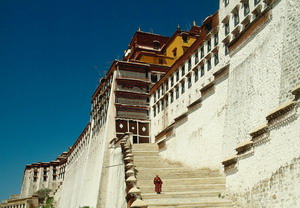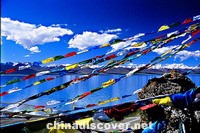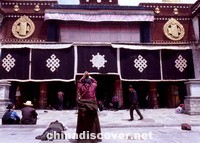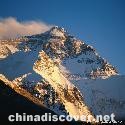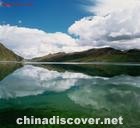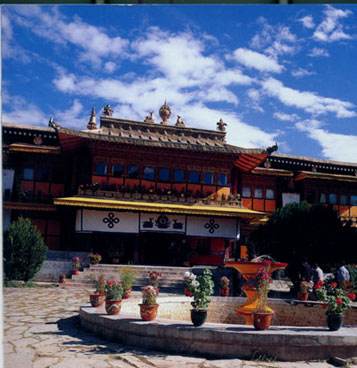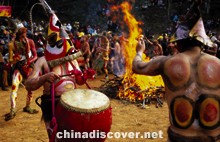Guge Kingdom
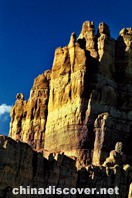
Overview
Tholing and neighbouring Tsaparang are the ruined former capitals of the ancient Guge kingdom of Nagri, accessed via the modern Chinese town of Zanda (also known as Thsasda or Zhada). Tsaparang, in particular, is a truly amazing sight, in part because it is so little known. The 9th-century ruins are carved into the steep sides of an imposing ridge. Cave dwellings, stunning monastic buildings and a ruined palace are linked by twisting paths and secret tunnels that worm their way into the rock itself.
Know more
This barren landscape seems an unlikely place for a major civilisation to have developed; yet the Guge Kingdom thrived as an important stop on the trade route between India and Tibet. By the 10th century it was a wealthy centre supporting several thousand people, and the great Guge King Yeshe O began to nurture an exdhange of ideas between India and Tibet. Yeshe O sent the young monk Rinchen Zangpo to study in India; the monk returned 17 years later to become one of Tibet's greatest translators of Sanskrit texts, and a key figure in the revival of Buddhism across the Tibetan plateau. Rinchen Zangpo built 108 monasteries throughout western Tibet and Ladakh. The two most important were those at Tsaparang and Tholing. He also invited Kashmiri artists to paint the unique murals still visible today. It was partly at Rinchen Zangpo's behest that Atisha, a renowned Bengali scholar and another pivotal character in the revival of Tibetan Buddhism, was invited to Tibet. Atisha spent some three years in Tholing before travelling on to central Tibet.
The kingdom fell into ruin just 50 years after the first Europeans to enter to Tibet arrived in 1624. Tsaparang is 21km east of the modern town of Zanda, and the Guge monastery at Tholing is now merely an adjunct to the town. The stunning scenery in the area is an attraction in itself. In particular, the northern road from Nagri into Zanda passes through incredible sand canyons and amazing eroded mountains, cut through by the Sutlej River on its way to the subcontinent.
Must see
Lake Manasarovar
Lake Manasarovar (Mapham yum-tso; 4,556m), or Mapham Yum-tso (Victorious Lake) in Tibetan, is the the most venerated of Tibet's many lakes. According to ancient Hindu and Buddhist cosmology the four great rivers of the Indian su-continent, the Indus, Ganges, Sutlej and Brahmaputra, arise from Manasarovar. In reality, only the Sutlej River originates at the lake, although the headwaters of the other great rivers are in close proximity. Just 20km from Mt Kailash across the Barkha plain, Manasarovar can be circumambulated in four or five days. Five of the original eight monasteries in the area have been partially rebuilt...more
Chiu Monastery
33km south of Darchen and 8km south of the main highway, Chiu Monastery enjoys a fabulous location atop a craggy hill overlooking the sapphire blue Lake Manasarovar. The chape here contains images of Sakyamuni (Sakya Thukpa) and Guru Rinpoche. Climb up to the roof of the monastery for stunning views of the lake. The huge peak on the southern horizon is 7,728m Gurla Mandata, near the border with Nepal.
There are hot springs behind the monastery, and a small glass-roofed bathhouse close to the village. The water is channelled from the hot springs into individual cubicles via open ducts and it's barely likewarm by the time you can get a few centimetres of water into the mouldy tiled tubs. You can also do your laundry in the warm outflow around the back...more
Mt Kailash
The 52km circuit of Mt Kailash (6,714m) is one of the most important pilgrimages in Asia. A religious sanctuary since pre-Buddhist times, a trek here wonderfully integrates the spiritual, cultural and physical dimensions of a trip to Tibet, which explains its growing attraction. The well-trodden track around the sacred mountain passes through verdant alpine valleys linked by a lofty pass, the Drolma-la. Being able to meet pilgrims from across Tibet and other countries is one of the many allures of this walk.
Mt. Kailash, at 6714m, is not the mightiest of the mountains in the region, but with its hulking shape-like the handle of a millstone, according to Tibetans-and its year-long snow-capped peak, it stands apart from the pack.The mountains is known in Tibetan as Kang Rinpoche, or ' Precious Jewel of Snow '...more
